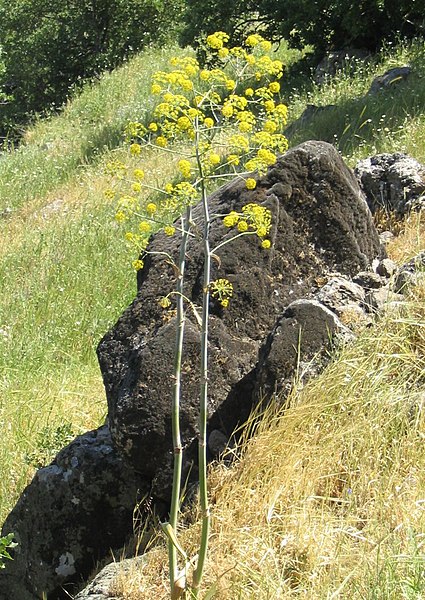Asafoetida is a plant that is native to the Middle East and India. It has a strong, pungent smell that is reminiscent of garlic or onions. Asafoetida has been used as a spice and medicinal herb for centuries.
In traditional medicine, it is used to treat various digestive disorders such as irritable bowel syndrome and bloating. Asafoetida is also said to have anti-inflammatory and antispasmodic properties.
The plant is a member of the carrot family and its scientific name is Ferula asafoetida. Asafoetida plants can grow up to two meters tall and have large, flat leaves.
The flowers are small and white, and the roots are thick and fleshy. Asafoetida is usually sold in powdered form, but the resin can also be found in some health food stores.
When using asafoetida powder, it is important to start with a small amount and gradually increase the amount until the desired flavor is achieved.

Essential

Soil Composition
Asafoetida does not need much water, and it prefers well-drained soil with a neutral pH. A potting mix made up of peat moss, perlite, and vermiculite is a good option for Asafoetida.
Watering
The Asafoetida plant is drought-tolerant and does not require much water. In fact, too much water can actually harm the plant. Asafoetida prefers to grow in well-drained, sandy soil. It can also tolerate clay soils as long as they are not waterlogged. When watering Asafoetida, be sure to allow the soil to dry out completely between watering sessions.
Flowering
The Asafoetida plant flowers in the spring, with small, white flowers that are borne in umbels. The Asafoetida plant is propagated by seed, and the seeds are typically sown in early spring.
As the Asafoetida plant is in flower during the spring season, it is an important source of nectar for bees. As such, the Asafoetida plant plays an important role in pollination.
Fruiting
Asafoetida is a perennial plant that produces a large, edible fruit. The plant typically grows to a height of 2-3 meters and has a spreading, umbrella-like canopy.
Asafoetida fruits are large and spherical, with a diameter of up to 10 centimeters. The exterior of the fruit is covered in a thin, papery skin that is brown or yellow in color.
Inside the fruit is a white, fleshy interior that contains numerous small, black seeds. Asafoetida fruits are commonly used in pickling recipes, as their strong flavor helps to mask the taste of other ingredients.
In addition, the fruits can be dried and ground into a powder that can be used as a spice.
Propagation
Asafoetida is a hearty plant that can be propagated relatively easily. However, it does require some specific care in order to thrive. Asafoetida plants need full sun and well-drained soil in order to grow.
They also require regular watering, although they cannot tolerate soggy conditions. When propagating asafoetida, it is best to start with young plants or cuttings. This will give the new plants the best chance of success.
Once the asafoetida plants are established, they are relatively low maintenance and can tolerate periods of drought.
Asafoetida plants can produce large, fragrant blooms that will add beauty and interest to any garden.
Pests and diseases
Asafoetida is susceptible to several pests and diseases, including root-knot nematodes, Aspergillus niger (black mold), and powdery mildew. Root-knot nematodes are small, worm-like creatures that live in the soil and feed on the roots of Asafoetida plants.
Aspergillus niger is a type of black mold that can cause Asafoetida plants to rot. Powdery mildew is a type of fungus that causes Asafoetida plants to develop a white powdery substance on their leaves.
Asafoetida plants can be treated with pesticides, fungicides, and nematicides.
Irritation to pets
The plant has a strong, pungent smell that can be irritating to pets. In fact, asafoetida is often used as a repellent for animals. As such, it is important to keep this plant out of reach of animals.
If an animal does come into contact with the plant, it may experience irritation and discomfort. Asafoetida should only be used around pets if it is diluted and used in small amounts.
It is important to note that asafoetida should never be ingested by humans or animals. If you suspect that your pet has come into contact with asafoetida, it is important to seek medical attention immediately.
| Asafoetida | |
| Water | Allow top soil to dry out before watering. |
| Soil ph | 6.5-7.5 |
| Sunlight hours | It needs full sun and dry weather; |
| Pests and Diseases | Very resilient to pests and diseases |
| Temperature | The plant can withstand a max temperature between 35 deg and 40 deg C; can withstand -4 deg C. Becomes dormant in extreme weather. |
| Soil composition | The plant requires a mix of sand loamy or clay well-drained soil and very little moisture; allow the top soil to dry before watering. |





